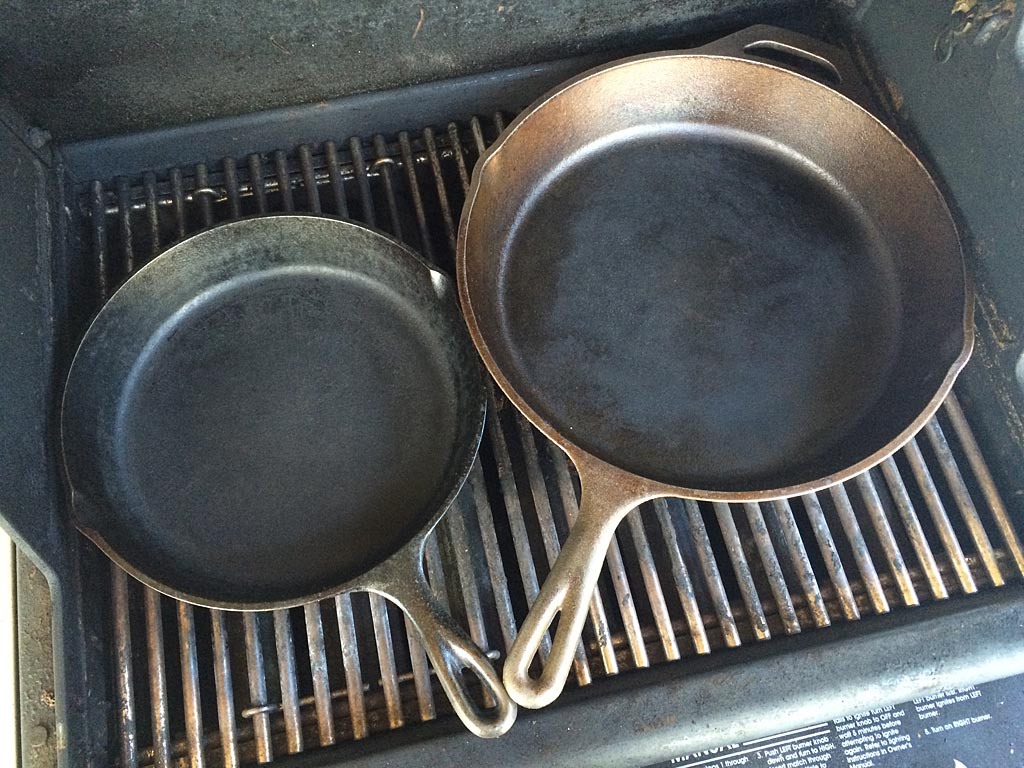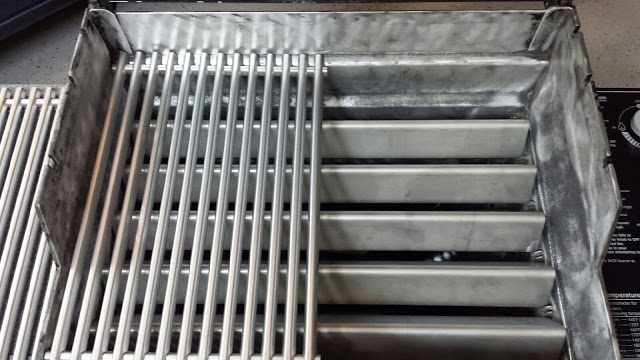It’s not uncommon to encounter a rusted-out screw hole when restoring an old Weber gas grill. How do you repair a rusted-out screw hole? In some cases, it’s easy enough to clean-out whatever remains of the hole and replace the original screw with a bolt and nut. But in some cases, you’ll want (or need) to repair the screw hole so the original screw can be used again.
Category Archives: Clean, Maintain & Repair
Spider Screens: Inspection & Cleaning
Did you know that your Weber gas grill contains spider screens? Did you know that you need to occasionally inspect and clean them? If you didn’t know these two facts, read on.
When the performance of your Weber gas grill seems to be lacking—for example, it’s not achieving the high temps it used to—the first thing you should check is the condition of the burner tubes. If the tubes are covered with cooking debris and scale and the flame pattern is more yellow than blue, the burner tubes need to be cleaned.
Replacement Cooking Grates For Weber Q Gas Grills
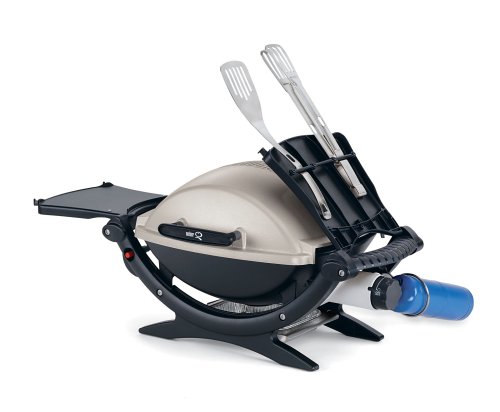
Restoring or refreshing a Weber Q portable gas grill? If so, you may be in the market for replacement cooking grates.
Here’s a handy list of replacement cooking grates for popular Weber Q models. The Amazon links help support this blog, so thanks in advance for clicking!
Weber Q Replacement Cooking Grates
All include a set of 2 grates and 2 support clips.
- PECI – Porcelain-enameled cast iron
| Part No. | Type | Fits | Dimensions (inches) |
| 7644 | PECI | Weber Q 100/1000 series | 17 x 12.7 x 0.5 |
| 7645 | PECI | Weber Q 200/2000 series | 21,5 x 15,3 x 0.5 |
| 7646 | PECI | Weber Q 300/3000 series | 25 x 17.8 x 0.5 |
Replacement Cooking Grates For Weber Spirit & Genesis Gas Grills
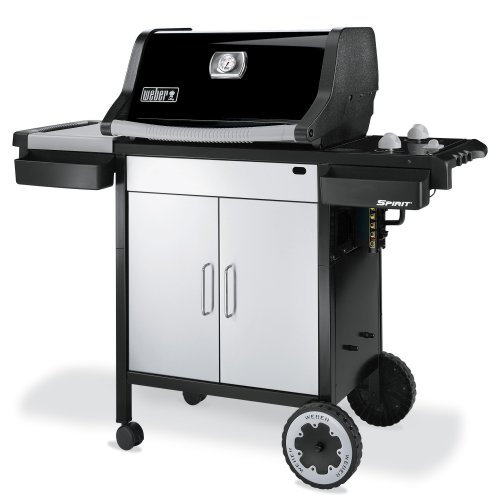
Restoring or refreshing an older Weber Spirit or Genesis gas grill? If so, you may be in the market for replacement cooking grates.
Here’s a handy list of replacement cooking grates for popular Weber Spirit and Genesis models. The Amazon links help support this blog, so thanks in advance for clicking!
Spirit & Genesis Replacement Cooking Grates
PES – Porcelain-enameled steel
PECI – Porcelain-enameled cast iron
SS – Stainless steel
* – Models with side-mounted control panels
| Part No. | Type | Fits | Dimensions (inches) |
| 7523 | PES | Spirit 200* series, Spirit 500, Genesis Silver A | 15 x 11.3 x 0.2 |
| 7525 | PES | Spirit 300 series, Spirit 700, Genesis Silver B/C, Genesis Gold B/C, Genesis Platinum B/C (2005 model), Genesis 1000-3500 | 17.4 x 11.8 x 0.2 |
| 7522 | PECI | Spirit 200* series, Spirit 500, Genesis Silver A | 15 x 11.3 x 0.5 |
| 7637 | PECI | Spirit 200 series | 17.5 x 10.2 x 0.5 |
| 7638 | PECI | Spirit 300 series | 17.5 x 11.9 x 0.5 |
| 7524 | PECI | Genesis 300 series | 19.5 x 12.9 x 0.5 |
| 7521 | SS | Spirit 200* series, Spirit 500, Genesis Silver A | 14.9 x 11.3 x 0.5 |
| 7639 | SS | Spirit 300 series | 17.3 x 11.8 x 0.5 |
| 7528 | SS | Genesis 300 series | 19.5 x 12.9 x 0.6 |
Deep Cleaning Your Weber Gas Grill
In a post last year, I said I was a clean freak when it comes to my grill. But sometimes I get busy and/or lazy and I let my Weber Summit 450 go too long between cleanings. I know it’s starting to get bad when I have a hard time lighting the grill because the ignitors are clogged with debris. I know it’s getting even worse when the burners are burning unevenly and with yellow flames because some of the burner holes are clogged. That’s when I know it’s time to break down and do a deep cleaning of my grill.
Here’s how I do it.
Grill Cleaning Tools & Supplies Needed
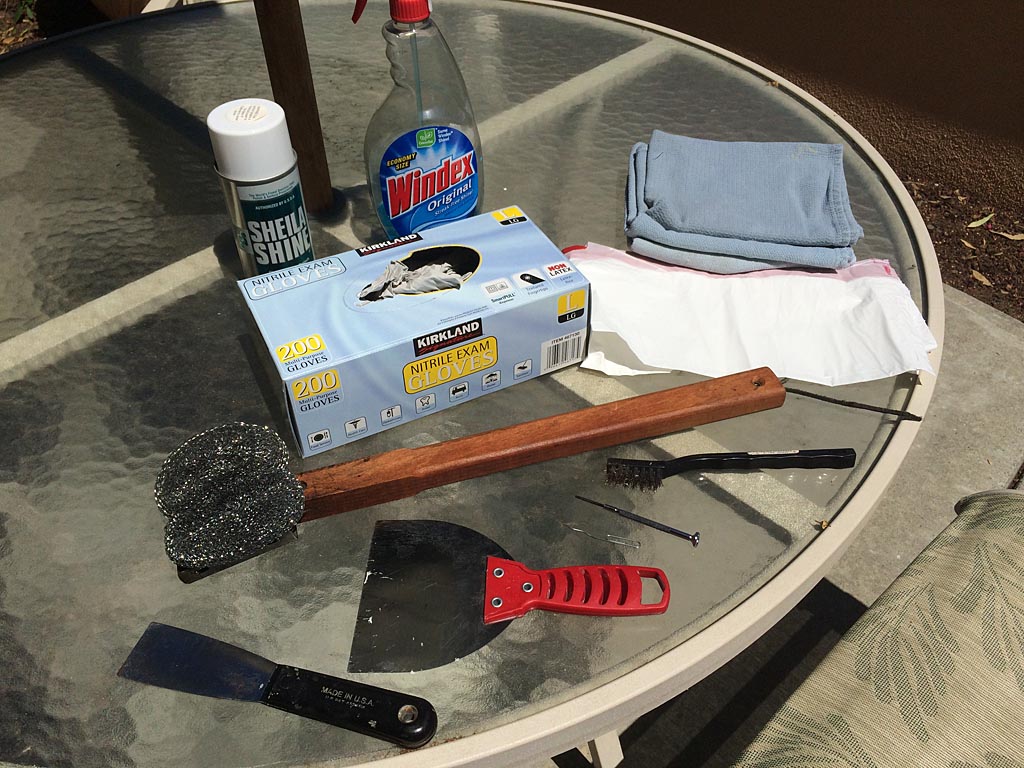
To deep clean your grill you’ll need the following tools and supplies:
- Grill brush
- Leather grilling gloves
- Narrow and wide putty knives
- Stainless steel bristle brush
- Eyeglass screwdriver or paper clip
- Disposable latex/nitrile gloves
- Windex, Simple Green or similar cleaner
- Stainless steel cleaner
- Compressed air duster
- 0000 super-fine steel wool
- Towels/rags
- Garbage bag
During some of the steps shown below, you may want to wear disposable gloves to keep your hands clean. Continue reading Deep Cleaning Your Weber Gas Grill
How To Remove Odors From Cast Iron Skillets & Cookware
Does your cast iron skillet smell funky? If so, try this tip from America’s Test Kitchen. Place it in a 400°F grill or oven for about 10 minutes. This burns off the oxidized fatty acids left behind from cooking that cause the odor.
Let the pan cool until still warm but safe to handle. Apply a thin coat of vegetable oil to the pan, removing any excess with paper towels. Your skillet is ready to go!
This method works for all cast iron skillets, pots, Dutch ovens, griddles and bakeware.
Burn Off Grates Before Grilling, Not After
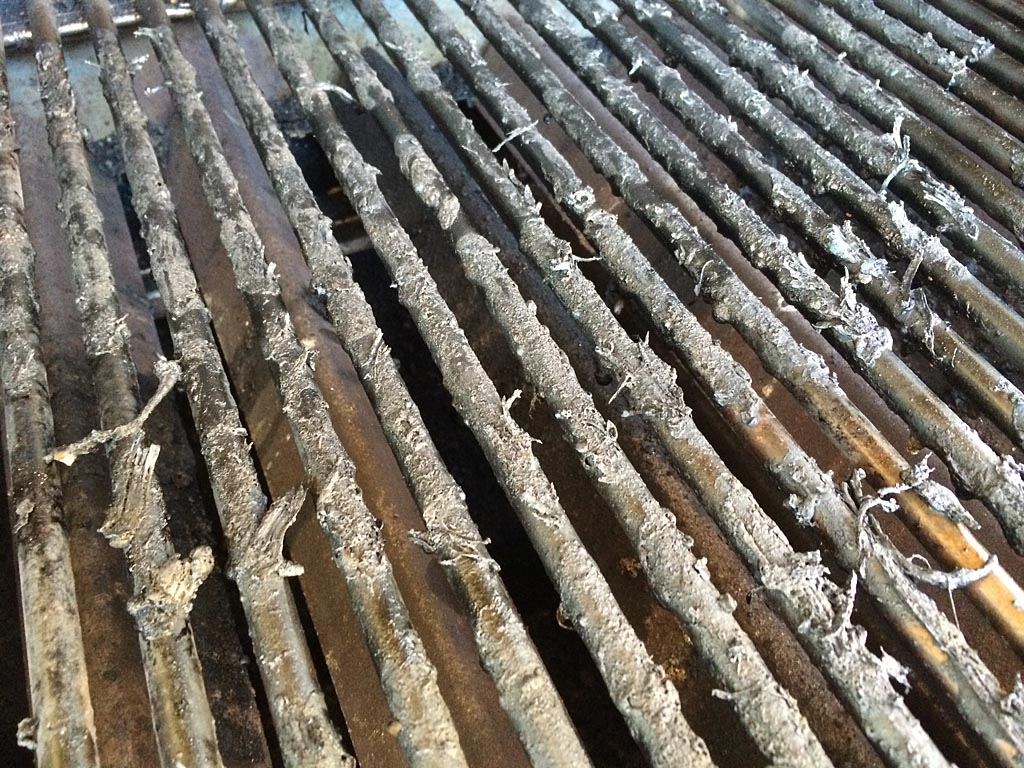
There are two, maybe three reasons why it’s best to burn-off the grates in your gas grill before grilling, not after:
1) You preheat the grill and burn-off the grates in a single step, saving time and fuel.
2) There’s zero chance of forgetfulness. If you burn-off after cooking, you go into the house and enjoy your meal, only to realize 30 minutes later that your grill is glowing cherry-red-hot out on the patio. In fact, on one occasion, I left the house to run errands with my Weber Summit 450 burning-off in the backyard. I’ll never make that mistake again.
3) Leaving carbonized debris on raw cast iron grates between uses may help prevent rusting.
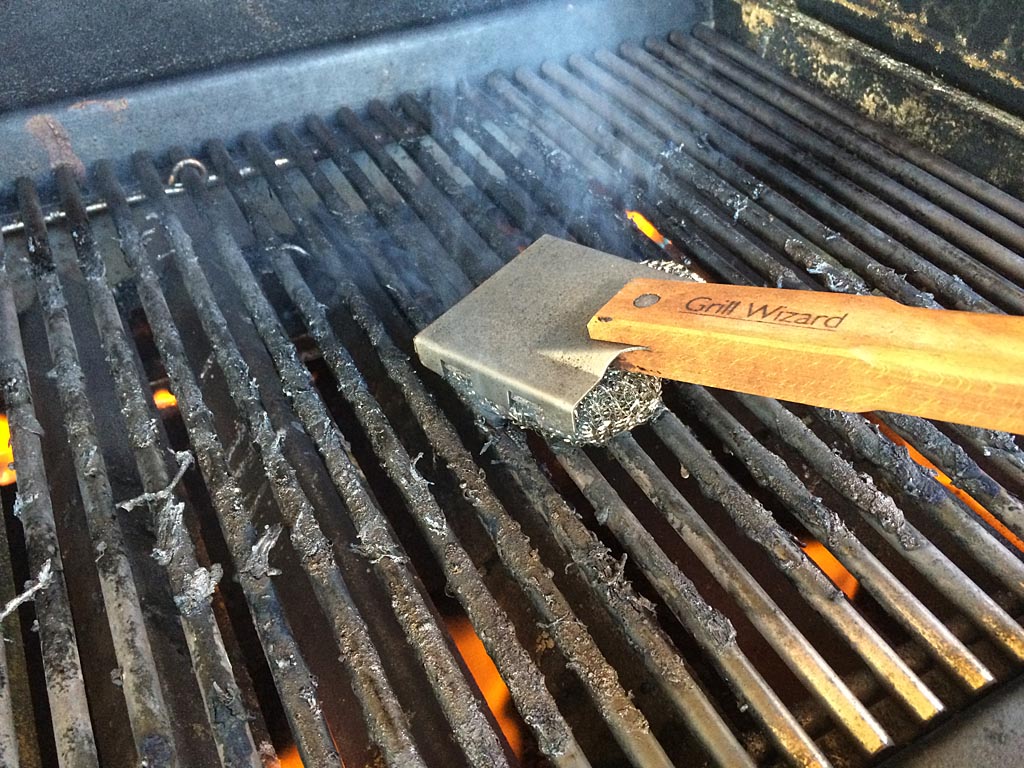
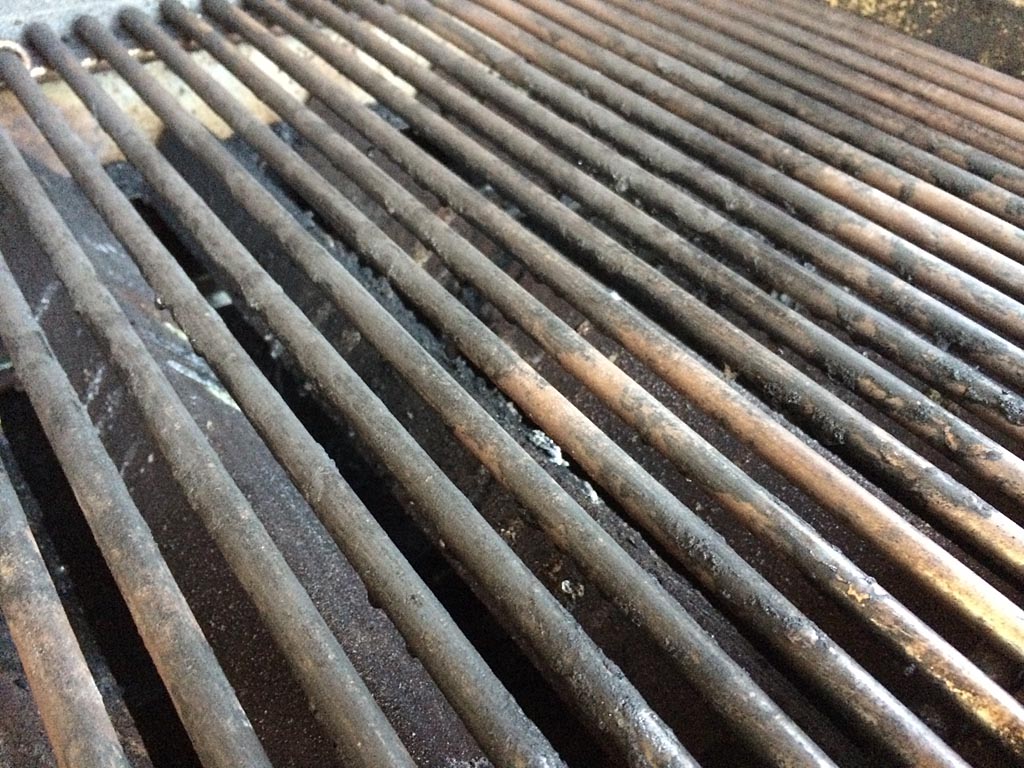
All About Flavorizer Bars
One of the reasons that Weber gas grills work so well is because of a feature called Flavorizer bars. These are the inverted v-shaped pieces of steel that sit below the cooking grates and above the burner tubes.
Flavorizer bars serve four purposes:
- Prevent Flare-ups: Flavorizer bars quickly vaporize some of the grease that drips off the meat and sheds any excess into a drip pan below the bars. Lava rocks or other media allow grease to pool and flare-up.
- Even Heat Distribution: Flavorizer bars create even heating throughout the firebox.
- Protect The Burner Tubes: Flavorizer bars prevent debris from clogging the burner tube ports.
- Flavor & Aroma: The vaporized grease from Flavorizer bars adds to the aroma and flavor of grilled meats.
Types of Flavorizer Bars
Weber grills use two types of Flavorizer bars. Least expensive are porcelain enameled steel. Most expensive are 18-gauge stainless steel. Stainless steel Flavorizer bars are more expensive and will last longer, but both types will last a very long time.
Despite what you might assume, stainless steel Flavorizer bars are not rust-free. The marinades, salts, acids and high temperatures they are exposed to will cause rust to develop over time.
Cleaning
To clean the Flavorizer bars, start by burning off the grill at HIGH temperature for 15 minutes. This will turn most accumulated debris into ash. If you have cast iron grill grates, remove them before burning off the grill, otherwise you will burn the seasoning off the grates.
After 15 minutes, turn the grill off and let cool. Remove the bars and brush off any debris with a grill brush. A wide putty knife can also be used to scrape tough residue off the bars. Take this opportunity to clean the burner tubes, the inside of the firebox, and the drip pan.
Replace all the parts and your grill is ready to go. You may consider changing the order of the Flavorizer bars if you notice some wearing faster than others.
Flavorizer bars can be washed in hot, soapy water and scrubbed with SOS steel wool pads, but the burn-off method is easier. Weber says that citrus-based dish soaps should not be used.
Weber does not recommend using the dishwasher, oven cleaners, or a self-cleaning oven to clean Flavorizer bars.
When To Replace
Flavorizer bars do not need to be replaced until they rust through or burn through.
Know Your Model
To get the right set of replacement Flavorizer bars, make sure to know your grill’s model name and number. The dimensions of the bars and the number of bars (5, 7, 8, 11 or 13) will vary depending on the model.
Warranty
Weber warrants porcelain enameled Flavorizer bars for 2 years and stainless steel Flavorizer bars for 5 years against rust through or burn through. Both tend to last several years longer than their warranties, depending on how often you grill.
Where To Buy
You can purchase original replacement Flavorizer bars at Amazon.com or other online retailers. They can also be purchased by calling Weber Customer Service at 800-446-1071.
There are also aftermarket sellers of replacement Flavorizer bars using heavier 16-gauge stainless steel available at Amazon.com.
Flaking Inside The Lid
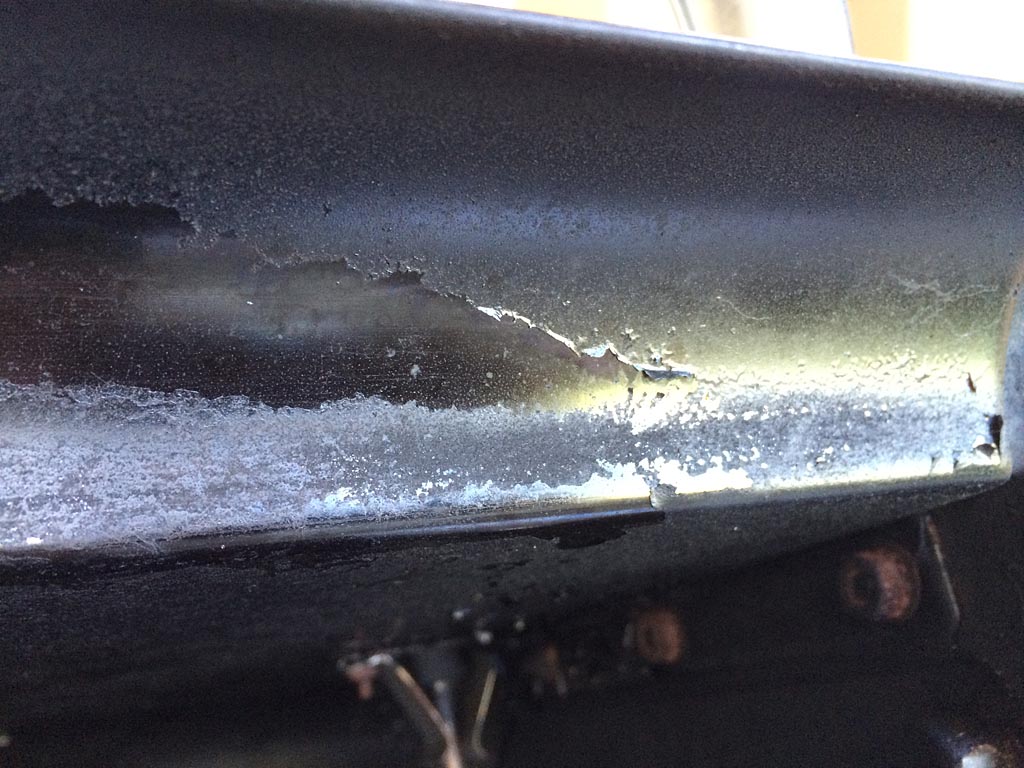
A common complaint from new Weber grill owners goes something like this:
It looks like the paint is peeling inside the lid of my new grill. WTF? I expected more from Weber!
OK, just chillax, Grasshopper. Weber does not paint its grills. They use a baked-on porcelain enamel finish that cannot peel. What you’re seeing is grease and smoke that builds-up during normal use, turns into harmless carbon, and eventually peels off in flakes or sheets.
Before grilling, use a grill brush or a balled-up piece of aluminum foil to remove any loose flakes. If you really want to be fastidious about it, each time you finish cooking, while the lid is still warm, wipe the inside surface with paper towels or a soap and water solution to prevent the build-up.
Remember Your Warranty
Note: This blog post was written in 2014. As it turns out, that was the last year for the warranty specs described in this post. Starting in 2015, Weber changed to a 10-year limited warranty on Spirit, Genesis, and Summit gas grills.
Do not assume that the warranty specs listed below are valid for your grill. Always check the owner’s manual for your grill’s warranty info, downloading a copy from Weber.com, if necessary.
In May 2014, I wrote about an example of fire box burn-through in a Weber Genesis E-310 propane grill. In that post, I noted that the grill was only 7 years old (a 2007 model). A reader contacted me, suggesting that the fire box should be covered under warranty on a 7 year old grill (it’s warranted for 10 years) and that a free replacement fire box would be a better solution than the repair shown in my post.
Yeah…why didn’t I think of that?
When was the last time you thought about your Weber gas grill warranty? If you’ve been suffering with a problem and haven’t gotten around to fixing it, maybe it’s covered under warranty!
Here’s a list of warranty info for Weber gas grills as of July, 2014. I’m providing it here for informational purposes, make sure to check your owner’s manual for the specifics for your grill or call Weber at 800-446-1071 for more details.
| WEBER SUMMIT, GENESIS & SPIRIT SERIES | WARRANTIES |
|---|---|
| Aluminum castings | 25 years (2 years on paint excluding fading) |
| Stainless steel shroud | 25 years |
| Porcelain-enameled shroud | 25 years |
| Cookbox Assembly | 10 years (2 years on paint excluding fading) |
| Stainless steel burner tubes | 10 years |
| Stainless steel cooking grates | 5 years, no rust through or burn through |
| Stainless steel Flavorizer® bars | 5 years, no rust through or burn through |
| Porcelain-enameled, cast-iron cooking grates | 5 years, no rust through or burn through |
| Porcelain-enameled, steel cooking grates | 3 years, no rust through or burn through |
| Porcelain-enameled Flavorizer® bars | 2 years, no rust through or burn through |
| Infrared rotisserie burner | 2 years |
| All remaining parts | 2 years |
| WEBER Q SERIES | WARRANTIES |
|---|---|
| Cookbox | 5 years, no rust through or burn through (2 years on paint excluding fading or discoloration) |
| Lid Assembly | 5 years, no rust through or burn through (2 years on paint excluding fading or discoloration) |
| Stainless steel burner tubes | 5 years, no rust through or burn through |
| Porcelain-enameled, cast iron cooking grates | 5 years, no rust through or burn through |
| Plastic Components | 5 years, excluding fading or discoloration |
| All Other | 2 years |

